How to Reduce Customer Churn in SaaS in 9 Actionable Steps in 2025

How to Reduce Customer Churn in SaaS Businesses in 9 Steps [2025]
Churn is the death of any SaaS business.
Below, see the difference between a 10% monthly churn business and a 3% monthly churn business, with an average transaction value of $40, and average new customers of 100/month. Charts courtesy of Nickelled. The business with 3% churn does 3x more revenue (assuming all other factors are constant).
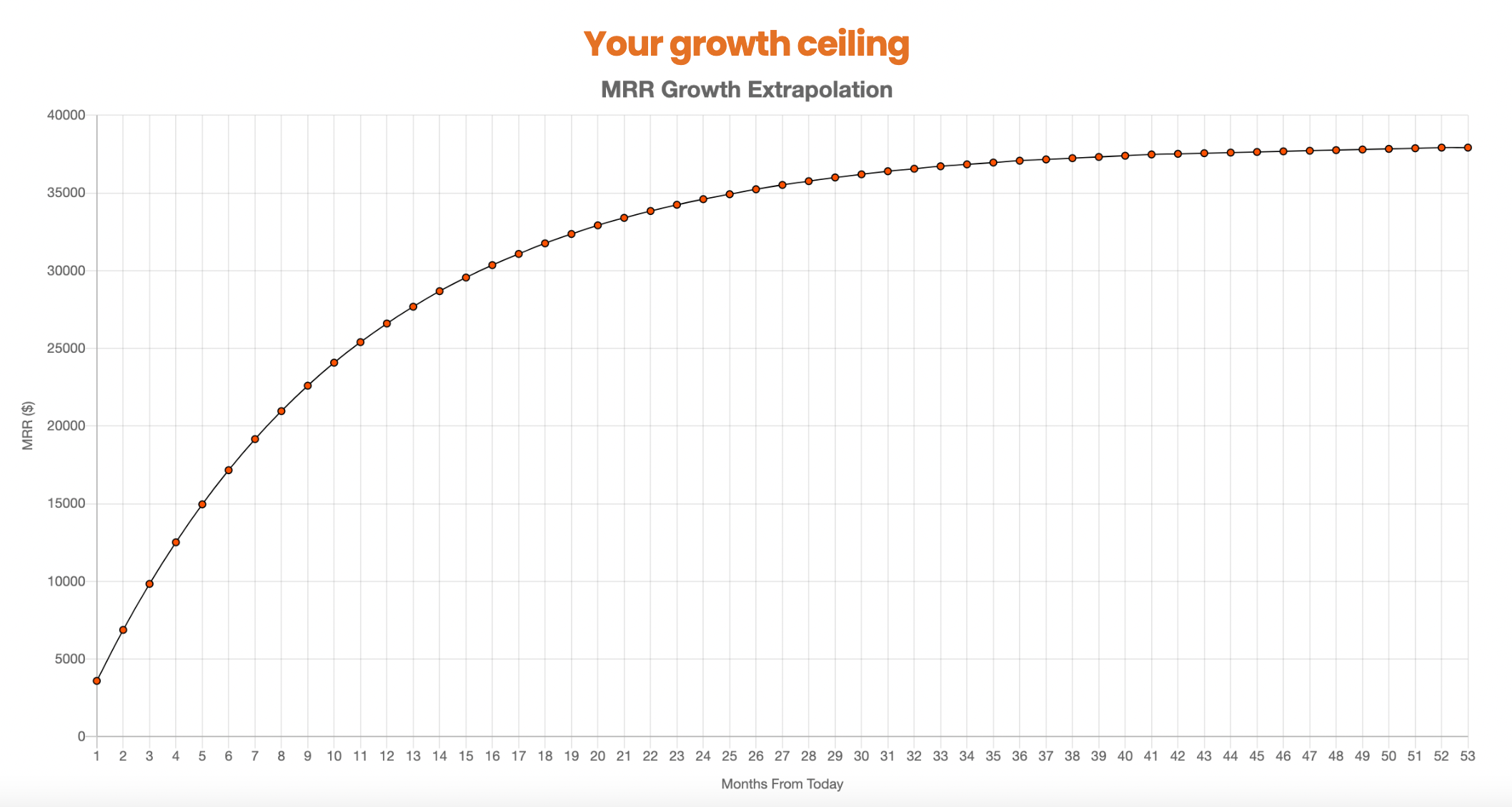
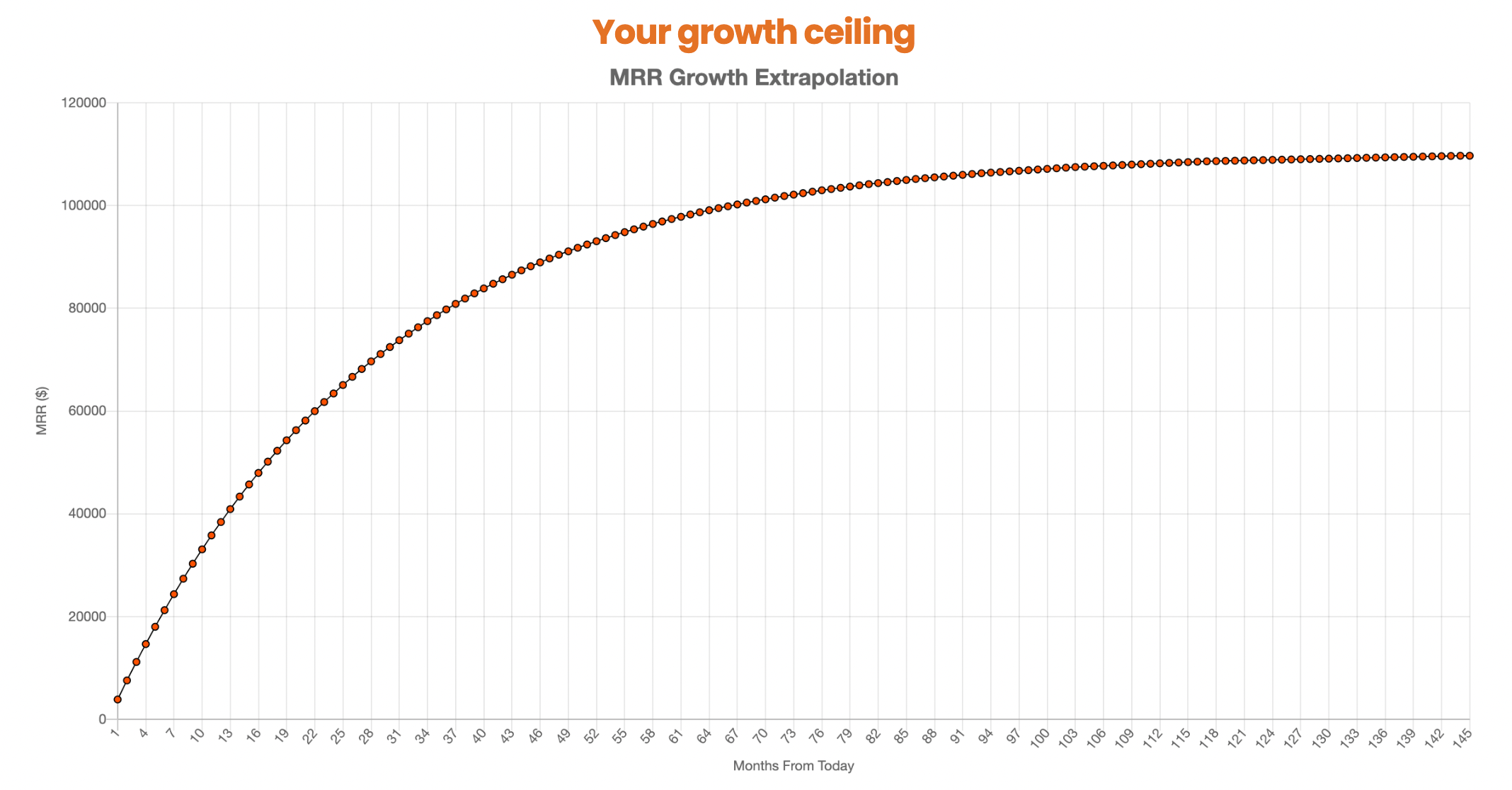
That’s right. Just a few points of monthly churn make a massive difference in top-line revenue.
And when you’re talking about a SaaS business, churn is even more critical. A consumer business (like a clothing brand or CPG product) has a massive addressable market. If you’re selling a niche software tool, your addressable market is much smaller. That means you need to acquire and retain more customers or risk losing a precious few of them to competitors.
What is Churn?
Essentially, churn is how many customers you lose every month. And it’s important because to keep growing you need to add more customers than you churn every month. That’s easy to do at a small scale, but if you’re at a larger scale and churning 500 customers every month, you’d have to acquire 501 customers to continue growing!
Churn is the opposite of your customer retention rate. So if you retain 95% of your customers this month, then your churn is 5%.
Mathematically, churn is defined as:
(Lost customers / Total customers at beginning of period)*100
For instance, if you have 220 customers at the beginning of May and at the end of May you have 210 customers, your churn is 4.5% (10 divided by 220).
Note: you do not include customers acquired during May in the formula.
Churn can be measured on a monthly, quarterly, or yearly basis.
Customer Churn vs Revenue Churn
Customer churn is the total number of customers that have canceled their service in a certain period of time. This is the formula I just explained above.
Revenue churn is the total revenue that has been lost by customers canceling their service in a certain period of time.
Both customer churn and revenue churn are important measures of a company’s financial health. Customer churn (sometimes called “logo” churn) can tell you in simple terms whether customers are staying or going. Revenue churn will
The difference is important for understanding your business because:
Some businesses may only churn a few users per period, but they churn the ones with the highest monthly transaction value (bad)
Some businesses may churn a lot of users per period, but they retain the ones spending the highest monthly transaction value (good!)
Some businesses have expansion revenue: meaning that even if some customers churn it’s fine because remaining customers tend to spend more per period over time
This is what expansion revenue or negative churn looks like. Check out the green line in the graph below, courtesy of HubSpot – it shows that revenue actually can become exponential when existing customers are contributing more revenue every period rather than less revenue (churn).
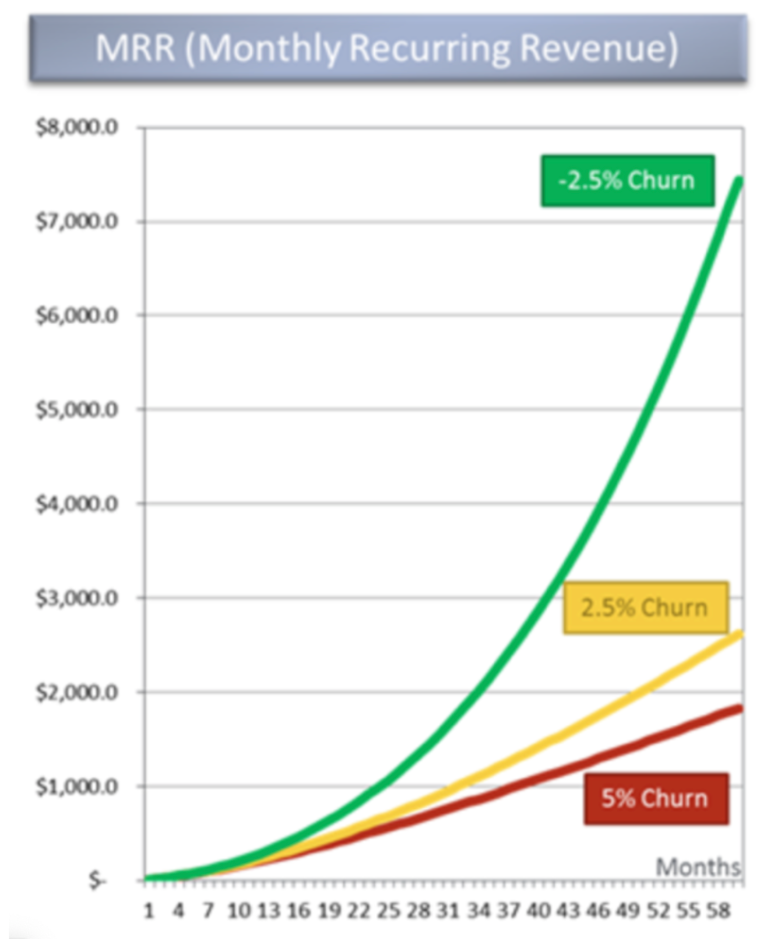
Source: HubSpot
Both customer churn and revenue churn are important metrics, but it’s important to understand the difference.
How Can You Reduce Churn?
Understanding churn is one thing. Pulling the levers to reduce churn is an entirely different story.
There are a million and one methods for reducing churn. I’ve played with every single one of them. This list is going to help you prioritize the ones that will work for your business – using best practices and a little product intuition.
Some of the most common methods for reducing churn include:
Identifying and addressing the root causes of churn via customer interviews
Offering incentives for customers to stay
Improving customer service
Improving onboarding flows
Analyzing customer data to determine which customers are most likely to churn
Implementing an email retention strategy
Implementing a customer feedback program
Creating a loyalty program
Designing the product to have a more functional UX and UI
Like I said, you’ve got a lot to choose from. And you can’t do everything. This list will help you decipher and prioritize.
1. Customer Attrition (Churn) Analysis
If you don’t know why your customers are churning, you’ll never know what to fix.
As such, the first step in reducing churn is an analysis. After all, “you can’t improve what you don’t measure” (Peter Drucker).
There are four ways I like to run churn analysis: phone/Zoom interviews, reading reviews, running cancellation surveys, and using a few analytical methods.
Phone/Zoom interviews
Yes, sometimes it’s painful getting on the phone, but you have to do it. It’s the only way to get empirical reviews of your product and real, free-form feedback. Simply sending out a survey is fine, but multiple-choice answers will never help you get to the root of your customer's problems. There are too many errors in surveys and customers simply won’t take the time to think critically about their churn reasons.
In running a great Zoom interview think about doing these three things:
Interview both churned and existing customers to spot the differences in their experiences.
Listen, don’t sell. Hearing feedback about your product can be tough, but you must resist the urge to tell them why they’re wrong or direct the conversation in any one way. Awkward silences are your friend – I promise you’ll get more raw feedback if you let the customer think and speak.
Finally, there’s one question you must ask: “what could we have done to keep your business” (churned customers) or “what can we do to get you to spend more” (existing customers). Sure, they’re blunt questions, but this is how you’re going to get your answers.
Publicly available reviews
There are treasure troves of customer data online. I suggest you read your reviews on G2, Capterra, and other blogs/sites. You can usually find nuggets of wisdom in there that will help you identify the primary churn reasons.
Don’t have a lot of reviews? Look at your competitors’ reviews. You can get some ideas about what customers love and what they don’t.
Cancellation surveys
I’ve found the most useful place to put surveys is in the cancellation flow. When a customer cancels is when they’re likely to give you an honest answer. It’s also when they remember why they churned. Believe it or not a lot of people forget even a few days later!
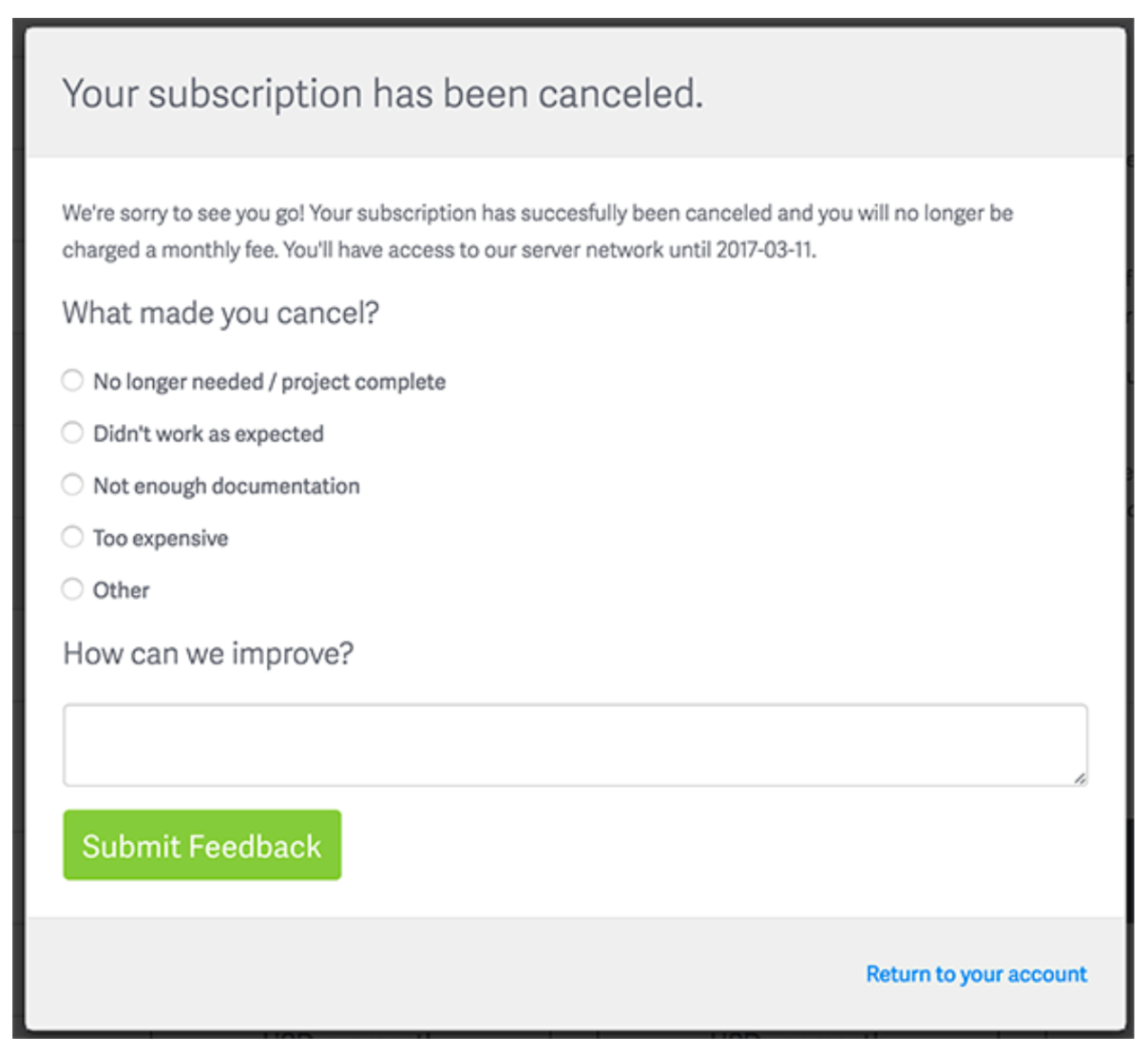
Analytics
Finally, look at your analytics when possible. If you have less than a few churning customers every month then you can do it manually. If you have big volumes of data you may need to get more sophisticated with a tool like Heap or Pendo.
Look for commonalities in churning customers. Do they work in a certain industry or have a specific job title? Did they come from a certain acquisition channel? Were they on a particular pricing plan?
Doing some analytical digging can help you to figure out which customer segments are
Also read 📚: The 17 Most Important SaaS Metrics to Measure and Track
Also read 📚: 12 Product Tour Examples from B2B and B2C SaaS Companies
Also read 📚: 11+ SaaS Growth Hacks You Need to Know and Try
2. Create an Onboarding Process that Works
No matter what you found in your churn analysis, I guarantee you’ve got plenty of opportunities to improve churn in the onboarding process.

The more your customers understand your product, its use cases, and how to navigate it, the more likely they are to stay. This concept is often called “time to value” (TTV).
TTV is one of the main metrics every software service looks at. For instance, early Facebook employees noticed that users who acquired 7 friends in 10 days were far more likely to stay with the platform rather than churn. Therefore, in the early days, “7 friends in 10 days” was their single guiding metric.
Having spoken to executives at landing page software companies, their guiding metric is “time to first page publish.” If they can get someone to publish a post quickly, they’re showing value fast and that person isn’t very likely to churn.
So if you can create an onboarding process that shows value quicker, you’re headed in the right direction.
But how? There are several ways to win customers in your onboarding experience:
Micro actions and progress bars: For many product experiences you can break onboarding up into small chunks. Doing so makes the user take micro-actions or make micro-commitments. This makes it easier for them to get deeper and deeper into the product and realize value more quickly.
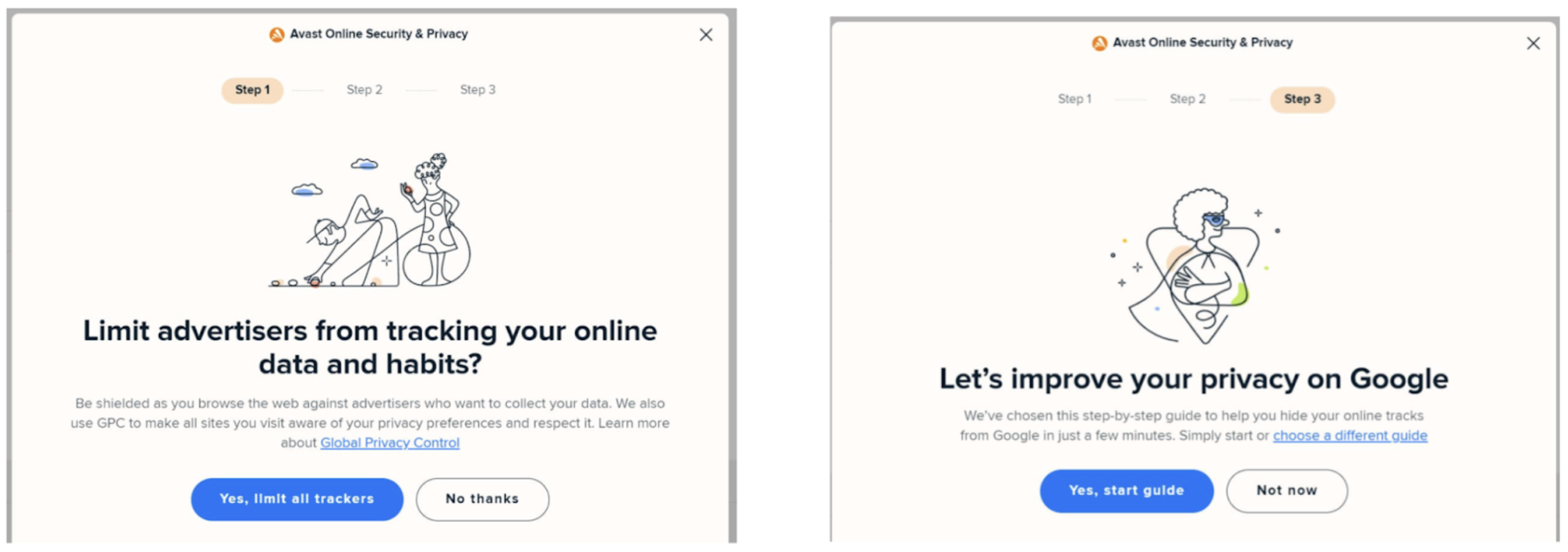
Onboarding videos: According to Wyzowl, 74% of people have watched a video to understand how to use an app or product better. The second I implemented videos into my product onboarding experience I understood why they’re so popular – immediately I saw a reduction in churn. People love the clarity that comes with a video. I think seeing a founder’s enthusiasm for the product also doesn’t hurt.
Help or information tools: Enable customers to learn at their own pace and in their own way by including “i” or help buttons on any feature that might be confusing. If you pay attention, you’ll see how many products have these learn-as-you-go features.
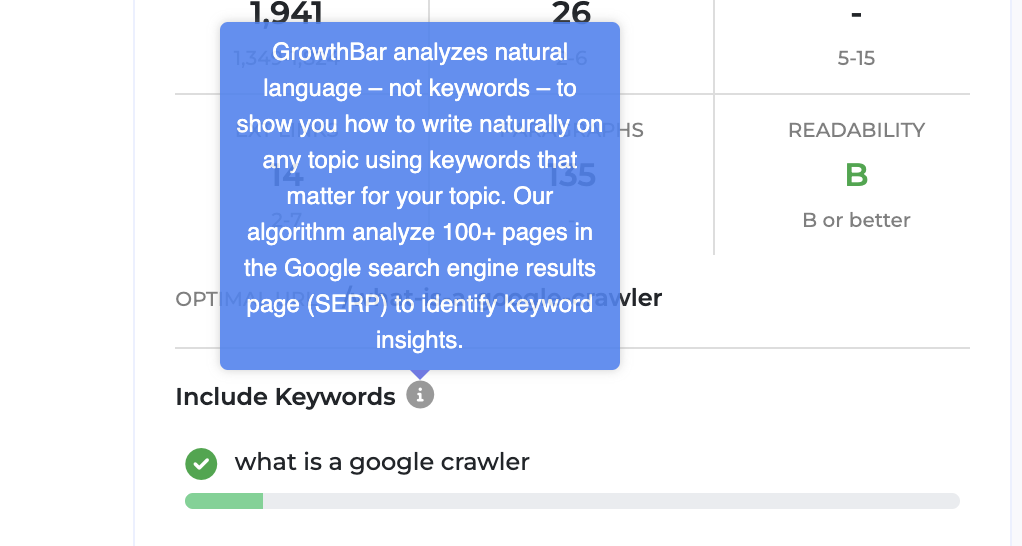
Email marketing: Email marketing still stands as one of the best ways to onboard users and show value quickly. In most cases, the first email a user gets after signing up will get the highest open and click-through rate of any email you ever send. With this in mind, make sure your first email is impactful and explains to users how to find value in the product FAST.
One-to-one onboarding: ConvertKit is famous for its concierge migrations. In the early days, founder Nathan Berry used to offer help migrating customers from more established platforms like Mailchimp. That strategy got them to their first $100k MRR and beyond. Years later they still offer the concierge migration service because of its positive impact on conversion rate and retention. Consider offering one-to-one migrations or demos to new customers.
If your product is difficult to use, customers are likely to churn – this is particularly true during onboarding. Make sure you are constantly testing and iterating on your onboarding experience to make sure it’s simple to use and quick to show value.
Want to improve your product onboarding experience try a product tour software.
3. Build Customer Loyalty
Building loyalty is one of those things that’s way easier said than done. But of course, if you do it right, you’re going to reap major benefits.
Creating a unique brand identity: Branding, like company culture, is made up of thousands of little decisions. It’s the thing people think about when they hear your company’s name. And it’s much easier to play it safe than to stand out. But you’ll build more loyalty by standing out. Feel free to turn some people off by cursing in your marketing copy, over-delivering on customer support, or even by having a quirky name/logo that is memorable. Truly, this works.
Offering quality products or services: I hope this one goes without saying. Jeff Bezos said, “If I build a great product or service, my customers will tell each other.” Great products build loyalty. Loyal customers stick around and refer their friends. Product is the best marketing.
Offering rewards and incentives: If customers feel like they are getting something back for being loyal to your brand, they are more likely to stick around. Try offering loyalty programs or discounts to frequent customers. Whenever a customer emails me with a question, I always go above and beyond – often I give them a nice discount on their next month’s payment.
Building a sense of community: If customers feel like they are a part of a community of people who share the same interests, they are more likely to be loyal to your brand. Plus, if you moderate your community and seed it with super users, you’ll create an echo chamber of big-time supporters. Use Facebook, a Slack group, or your own custom community.
4. Customer Support
There are many ways to reduce churn, but one of the most important is providing excellent customer support. This could be as easy as creating a robust Notion repository or hiring a fleet of customer support staff.
As an example, here's our Hopscotch Notion help documentation.
When customers have a positive experience with your company, they are less likely to leave. Make sure your customer support team is knowledgeable and available to help customers with any issues they may have. You can also provide helpful resources such as tutorials and FAQs to help customers resolve any problems on their own.
Remember that not all customers are created equal. Some customers are more likely to churn than others. Try to identify these customers early on and take steps to prevent them from leaving. Use analytics to track customer behavior and identify any warning signs.
5. Recover Failed Payments: Dunning
There are many reasons why a payment might fail, but some common ones include incorrect credit card information, expired cards, or insufficient funds.
If a payment fails, your customer might not be aware of it, which could lead to them churning. You can use a tool like ProfitWell to send email notifications when payments fail, which can help you to recover failed payments and keep your customers happy.
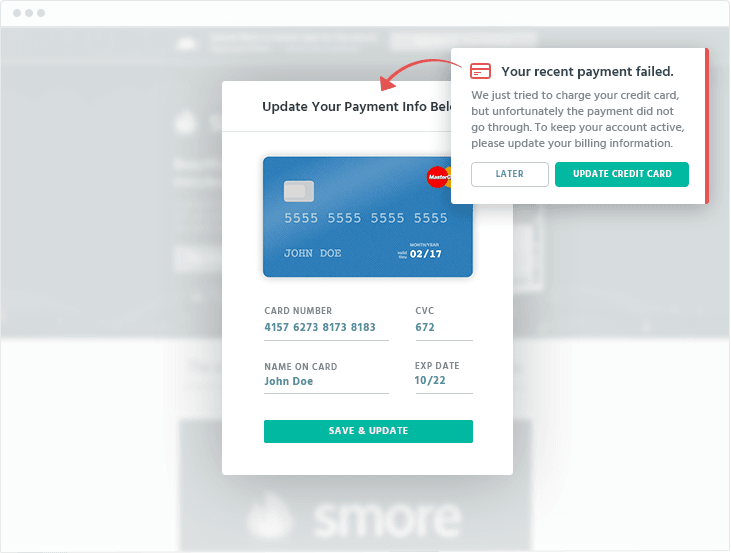
Source: ProfitWell
This process is called "dunning." The term dunning used to be closely linked to collecting payments that were owed. Sometimes called delinquent user notification, it's a simple reminder or something much more in-your-face. Today, dunning has evolved and is an important part of keeping businesses running smoothly.
Usually, dunning operates in a couple of ways, but the point is always to get customers to enter a usable credit card.
6. Move Customers to Yearly Plans
Yes, yearly plans work. But according to SaaSEmailMarketing.net, customers on yearly plans churn at a rate of 1.5% lower per year. That's significant.
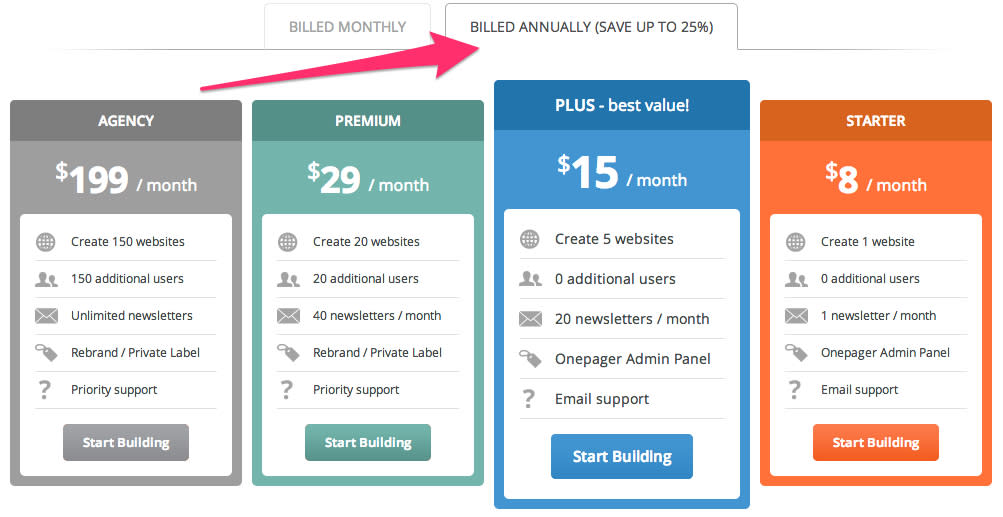
Yearly plans have the potential to add stability to a SaaS business by creating a longer relationship with customers and providing them with more incentive to stay. Plus, customers who commit to yearly plans invest more time in learning the product -- thus making the likelihood of product adoption higher.
As such, you might consider adding yearly plan options to your SaaS -- or at least give customers the option to "upgrade" to yearly once they've experienced the product.
7. Discount... for a Time
SaaS discounting lowers lifetime value (LTV) by 30%. That's money your business cannot afford to lose.
But you might be saying to yourself, "discounting gets customers in the door!" True, but what's the point, if they're not worth a whole lot?
The solution, in this case, to improve your revenue churn, is to give discounts that expire. Instead of offering customers "20% off forever," offer "20% off for your first year." The discount will still be appealing enough to acquire users, but won't kill your margins for years to follow... which is of course, great for reducing revenue churn.
8. Support Foreign Languages (if data supports)
Use Google Analytics or another customer analytics tool to determine where your users are. If you find via the Google Analytics Geo Report that they're in foreign countries, you better support them!
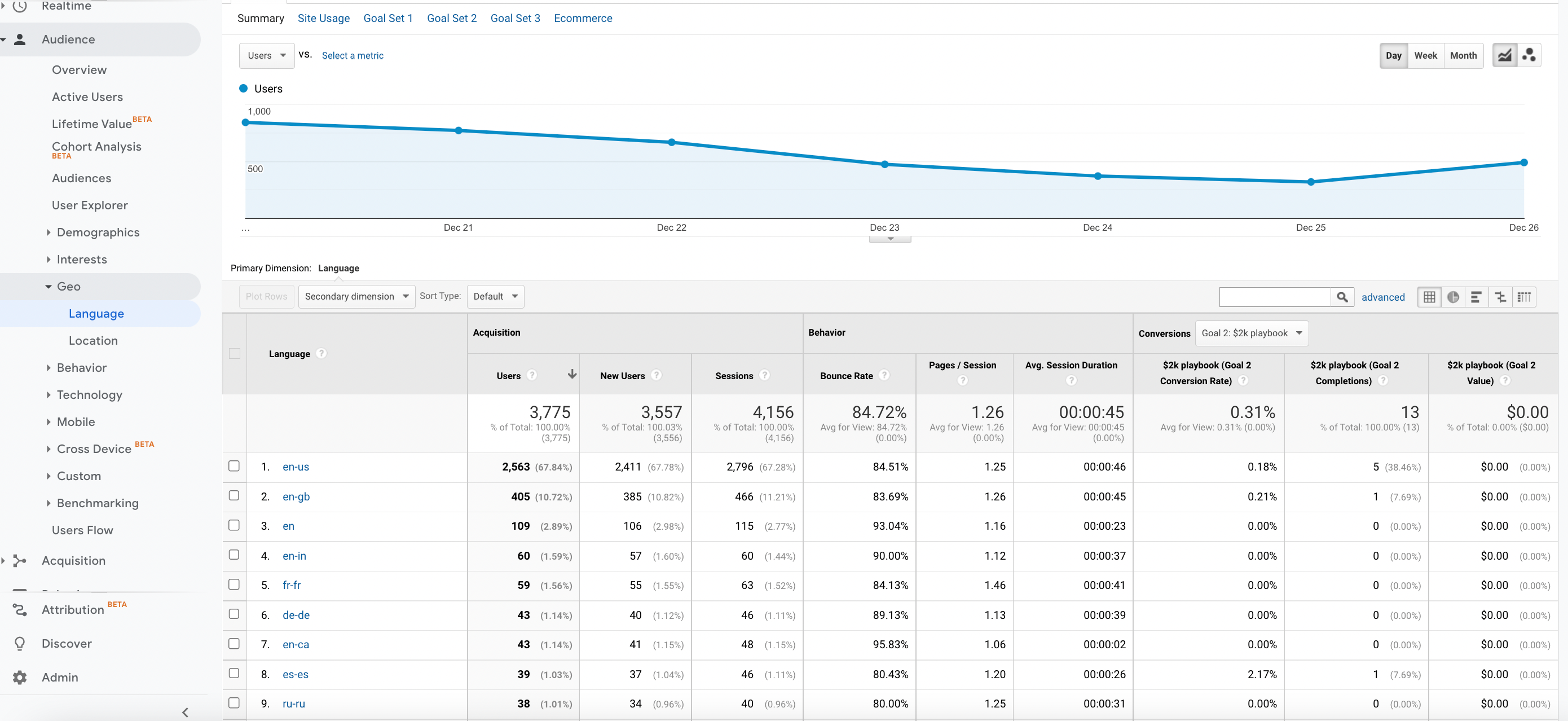
According to this study, most top SaaS businesses offer services and support for foreign languages. You can reduce churn among non-English speakers by:
Adapt your product to an international audience: make sure to use conditional logic in your code to account for differences in geo. Comply with GDPR and other local laws when applicable.
Support foreign languages via website callouts: let your (prospective) users know you're there for them in whatever language they need. Consider calling this out in FAQs.
Help documentation: hire someone on Upwork, or use a translation service to translate your help documentation.
Supporting foreign languages is an easy way to meet your users where they are, and reduce churn.
9. Create Expansion Revenue
Consumer SaaS companies are historically pretty high churn. So when SEO tool, Semrush IPO'd a couple of years ago with 120%+ net revenue retention, people were impressed. Remember, that means Semrush gets 20% more from the average customer this year than they did last year. The same was true of Monday.com’s IPO.
While these SaaS businesses are essential consumer SaaS (as opposed to B2B SaaS), they’re really good at “landing and expanding.” This means that although a lot of customers churn, especially in the first couple of months – both companies are very good at getting retained customers to spend more over time. This expansion revenue increases net revenue retention.
There are a number of tried and true ways to create expansion revenue. They include:
Prompting customers to add more teammates or seats to their account – and charging more for each seat added. Most project management tools like Monday.com and Asana get expansion revenue in this way.
Upselling customers on more advanced features in higher-tier plans. Understanding which features your best customers are using is a really good way to tier your prices in a way that promotes expansion revenue. Perhaps your best customers want to integrate with other apps, or use your API, or want concierge onboarding and support. Semrush creates expansion revenue in this way.
Usage-based pricing is the concept of charging by usage. This means that customers who only use your product a little bit are charged for only a little bit, and power users pay more. What this does is keep small customers happy with a palatable bill every month, but makes your most valuable customers even more valuable, thus creating expansion revenue. Twilio is an example of a usage-based pricing model.
The secret is to interview customers and figure out what will make them pay more for your product or service.
And while it’s not exactly an expansion revenue strategy, many companies prompt customers to upgrade from monthly to yearly plans. Yearly plans have better retention than monthly because the user only sees a bill once per year. Upgrading from monthly to yearly is a form of customer value expansion.
Churn Benchmarks by Industry
Industry churn benchmarks are notoriously hard to calculate. There are a few reasons for this.
Private companies don’t always release their churn data (with a few exceptions)
The way companies calculate churn is different. I’ve read about some companies that don’t consider a customer to have churned unless he/she has been using the product for three months. That’s pretty generous.
Some companies intentionally obscure their churn rates – or play with the numbers – to imply a better churn rate.
These are estimated churn rates by industry (yearly churn):
Conclusion
Reducing churn is important for any business, but it is especially important for subscription businesses. There are many ways to reduce churn, but the most important thing is to find the right way to reduce churn for your specific business.
As you know, there are a number of reasons why customers may churn, including:
The customer is not getting the value they expected
The customer is not using the product or service
The customer is not satisfied with the product or service
The customer is not able to use the product or service
The customer is not able to afford the product or service
And as this article made clear, there are a number of ways to reduce churn, including:
Churn analysis
Improve customer onboarding
Creating customer loyalty
Customer support
Recover failed payments
Start with step one! Look for the leaks in your customer retention funnel and determine where you need to spend your time.
Convert more trials with Hopscotch
Simple and delightful onboarding tours your users will love.

